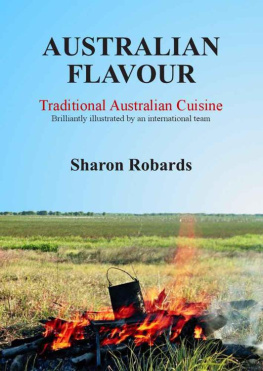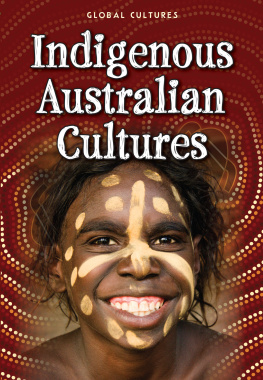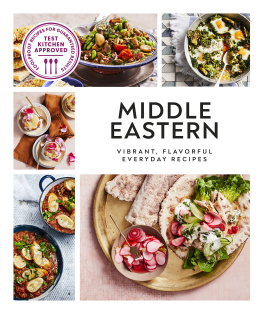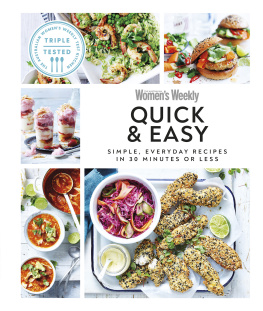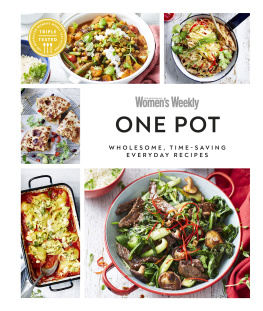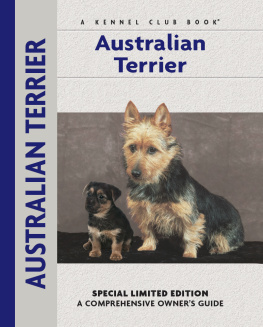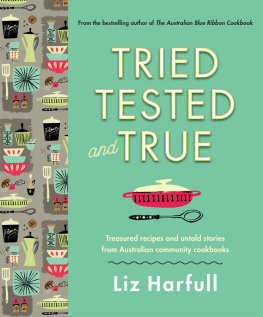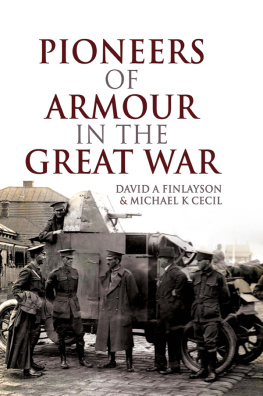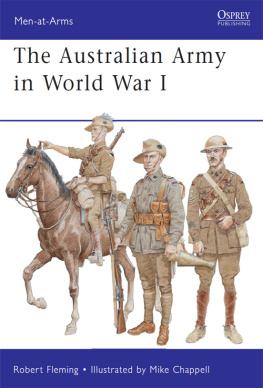Australian Flavour: Traditional Australian Cuisine Cooking [118]Sharon RobardsGMM Press (2008)
Rating:Tags: Cookbooks
Cookbooksttt
For today s abundance of fine Australian food we are grateful to immigrants from many nations. It is uniquely our own. In this book we celebrate and illustrate Australian Flavour with more than 150 recipes historical, iconic, and modern an overview, and historical notes. Australian Flavour is a collaborative work that captures traditional Australian cuisine. The recipes are compiled from some of the writers who had the biggest influence on our eating habits, from Isabella Beaton to Vic Cherikoff. More than fifty photographers from around the world have contributed images.
Edward Abbott, the Author of Australia s first cookery book, wrote in 1864, 'We like these quaint old customs and ceremonies and hope they will always be kept up in the old country.' Abbott was referring to Christmas pudding, and like Abbott, Australians have never lost their early heritage, they have added to it. ### About the Author Sharon Robards lives two hundred kilometres north of Sydney, on the beautiful and rugged east coast of Australia, in a place called Port Stephens, a sanctuary for dolphins and a Mecca for tourists who come to see an annual migration of 6,000 whales each year. Table of Contents Recipes by Section Australian Flavour Traditional Australian Cuisine By Sharon Robards ABOUT THIS BOOK Australian Flavour is a collaborative work that captures traditional Australian cuisine. Many recipes originated in other countries and became part of our eating habits when introduced by early settlers or the first Australian recipe writers. Some recipes are known the world over, embedded in other cultures as well as our own from our earliest days, and well established as part of our cuisine. The recipes are compiled from some of the writers who had the biggest influence on our eating habits, from Isabella Beeton to Vic Cherikoff.
Australian Flavour includes a of unfamiliar terms and ingredients. Two separate units of measurement is included: Standard metric weight and volume measurements, then their Australian equivalent. The Australian tablespoon is not the standard 15ml, but 20ml. All cup measurements are 250ml. Australian Flavour Traditional Australian Cuisine By Sharon Robards Macadamia Nuts Photographer Brad Cavanagh First print publication G MM Press, Australia, August 2008 This Edition, GMM Press, Australia, May 2012 Copyright Sharon Lee Robards All rights reserved. Apart from any fair dealing for the purposes of private study, research, criticism or review, as permitted under the Copyright Act, no part may be reproduced.
Print Edition can be brought from http://www.australianflavour.net National Library of Australia Robards, Sharon Lee, 1966 Australian Flavour : traditional cuisine Bibliography. Includes Index. ISBN 978-0-646-49428-9 I. Cookery, Australian I. Title. 641.5994 Cover design: Peter Wahl Front Cover photographer: Paul Davis Back cover images, left to right and top to bottom: A Meeting of Cultures, Animal Track Safari Tartare Sauce and Battered Fish, Sharon Robards Hamburger on the Beach, Celeste Goulding Happy Little Vegemite, Annabelle Le Dieu Chocolate Crackles, Janice Boughton Traditional Meat Pie, Zoey Lin Lamingtons, Kate Tejsinghani Vegemite on Shelves, Jeannette Haggstrom Anzac Biscuilts, Shauna Reid Neenish Tarts, M Sunflower Trad, Fairy Bread, Silvia Da Rocha Peach Melba, Sharon Robards Chiko Roll, James Cole Pavlova, Roy Ferguson Frog Cakes, Natalie Townsend Unless otherwise noted all images are owned by the respective photographers.
For my grandmothers Ruby and Nellie. Thank you for all the beautiful memories. Acknowledgements EDITOR Ann English INDEX Ken McAllister PHOTOGRAPHERS Craig Anderson, Black Diamond Images, Janice Boughton, Brainsorkle, April Bauknight, J Brew, Linus Broden, Abbey Brown, Morgan Carpenter, Brad Cavanagh, Elisa Chavarrie, Elaine Chavarrie, Elain Cheung, I-Ling Chua, James Cole, Melanie J Cook, Isobel Craig, Charlotte D, Phil Dodd, Stuart Etchells, Evenstar_9, Silvia Da Rocha, Becky Dewdney-York, Bill Donnelly, Nicola Donnelly, Sonja Drimmer, Roy Ferguson, Jeannie Fletcher, Dr Brendan Gladman, Gary Glen Fergus, Sharon Cooper, Celeste Goulding, Jeannette Haggstrom, Chris Hancock, Suellen Harris, Kate Harwood, Neil Henry, Lucia Hicks, Mark Hobbs, Tanya N Hoberg, Alison Holcomb, Jan Hoskins, Diana C House, Mel Jimenez, Gemma Jones, Tory Jones, Janine Kelly, Melisa Kesmez, Hannah Klekociuk, Annabelle Le Dieu, Julie Leung, Zoey Lin, Don Low, Nick Lucey, Anthony Malloy, Dennis Mojado, Raul Narangjo, Shauna Reid, Sharlene Reynolds, Karen Ronan, Amy Roth, Kathy Rose, Angie S Schneider, Bill Strong, Kate Tejsinghani, Natalie Townsend, M Sunflower Trad, Andrew Varela, Heather Wallace, Gary Warner, Ken Womack, Louise Young, Beth Zialcita OTHERS WHO HAVE PROVIDED RECIPES OR IMAGES FOR THE BOOK Patsy Raglar Australian Macadamia Society Rachael & Sean Arnold from Kakadu Animal Tracks Safari Jabiru, Northern Territory, Australia Lyn Oliver Sce Hwai Phang Lane Reality Simplot Australia Pty Ltd John Oxley Library (State Library of Queensland) John Woodrow The Aussie Chefs Vick Cherikoff and Benjamin Christie TRADEMARKS Trademark information has been omitted from the main text to assist readability. Registered trademarks of Cherikoff Global Pty Ltd: Alpine Pepper, Lemon Myrthle Sprinkle, Red Desert Dust Registered Trademarks of Kelloggs: Rice Bubbles, Chocolate Crackles. The Chiko trademark is used under license by Simplot Australia Pty Ltd and is reproduced with consent of Simplot Australia Pty Limited. Copha in Australia and Kremelta in NZ are the registered trademarks of Unifoods.
Vegemite is the registered trademark of Kraft. INTRODUCTION W HEN the first fleet of ships carrying convicts arrived in 1788 the sailors, settlers and Government officials brought with them recipes based on the British eating habits and cookery of that time. The diet was heavy with red meat and was dull, even monotonous. Many recipes required adaptation where ingredients were unavailable in Australia. What developed over the next couple of centuries was a delightful and distinctively Australian cuisine with world-wide roots. Australian Flavour began as an exercise to capture the meals my grandmothers loved.
I relished their cooking, summer or winter casseroles, soups, baked dinners, and bread and butter puddings. The meals my grandmothers made at home were very much based on what was cooked at Home the British Isles despite it being one hundred and eighty years for my grandmothers since their forebears landed on Australian soil, and well over two hundred years for us today. I discovered that for a century most Australians ate a crofters or smallholders diet, based on rural recipes from the English and Irish countryside. From the same origins came ingredients, the utensils, the methods, and the manner of serving. The pioneers relied on the camp oven, based on the Irish cauldron, a heavy circular pot on three legs to stand above a fire; camp ovens made to stand in line abreast had flattened sides. Apart from adding mashed potato to bread dough, the Irish had but one method of cooking: boiling potatoes in a cauldron.
A third of the original settlers were Irish. A modern writer called them the prototypes of modern Australians, because they demanded very little variety or quality in their food. This is not true of Australians today. As the years went on our taste for food was influenced by waves of immigrants from outside the UK. As late as 1861, 60 per cent of Australias population subsisted on prison rations. This diet was not the healthiest by todays standards.
Australias food for the first hundred years consisted of flour, meat, sugar, tea, and salt, and rice and dried peas when those foods were cheaply available. The settlers wasted very little of any animal or bird, consuming a great deal of offal meat such as brains, liver, kidneys, sweetbreads, tripe, heads, trotters, tongue, and of course sausage casings. Brawn, the jellied repository of finely sliced scraps, and sausages themselves accounted for every other part of the animal. Rabbits, which were introduced for sport and food, quickly became a pest. The settlers preferred mutton. All wild and native fauna were seen as inferior to mutton.
Next page
